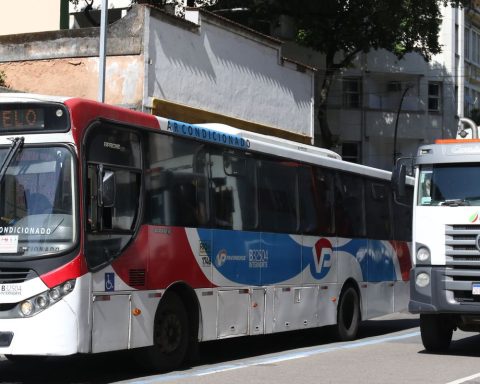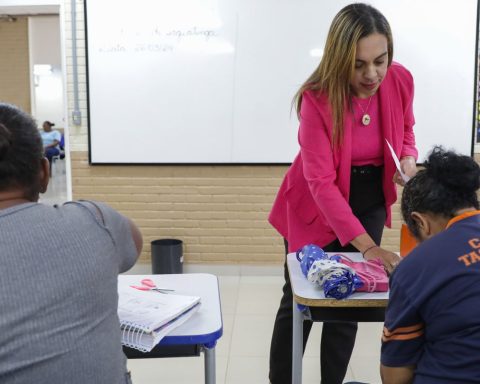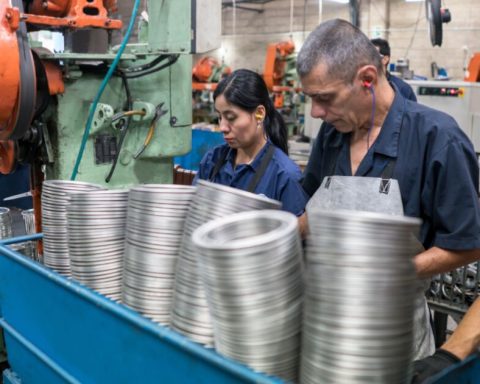Increased local food production, faster transportation, job creation and the supply of food items to low-income families are some of the potential benefits of the National Policy for Urban and Peri-Urban Agriculture, whose legislation was sanctioned last Friday (26) by President Luiz Inácio Lula da Silva. According to experts on the subject, the potential of the new policy is great, but it will depend on public incentives and coordination between the federal, state and municipal governments to be implemented.
A Law No. 14,935 defines Urban and Peri-urban Agriculture (AUP) as agricultural and livestock activities developed in urban areas and around the perimeter of cities. Among the objectives of AUP are to increase food and nutritional security for vulnerable urban populations; generate alternative income and occupational activities for the urban and peri-urban population; stimulate family work, cooperatives, associations and organizations of the popular and solidarity economy, among others. The coordination with supply and public procurement programs for schools, daycare centers, hospitals and other public establishments is also among the purposes of the new policy.
The Research Director of Instituto Escolhas, Jaqueline Ferreira, details the estimated growth potential of the sector. “We are talking about agriculture that already exists in cities, but is invisible. All large Brazilian cities and capitals already have initiatives of this type. However, since agriculture as an economic activity is historically associated with rural areas, these producers are unable to access public policies because many of them are not recognized as agricultural establishments,” she said. According to her, the difficulties include access to credit and the regularization of the enterprises by producers.
Potential
Given the lack of attention in recent decades, the sector has great potential for expansion. According to research by Instituto Escolhas, if just 5% of the areas mapped as potential areas for expansion of Urban Agriculture were implemented in three Brazilian cities (Curitiba, Recife and Rio de Janeiro), approximately 300,000 people could be supplied with the food produced each year.
In the capital of Paraná, this figure means that 96% of the total number of people living in poverty could benefit from the implementation of new production units. This would require investment and incentives.
Studies carried out by the institution show that, in Belém, the practice has the potential to supply 1.7 million people with vegetables – a number greater than the local population, which is 1.5 million.
The director of the institute cites, among the main benefits of the legislation, the generation of jobs and income, the increase in food security in more vulnerable peripheral areas, the reduction of food waste and the cost of production, since food will be transported to nearby locations.
In the Metropolitan Region of São Paulo alone, organic agriculture in peri-urban areas could generate 180,000 jobs – a simulation carried out in current pasture areas, without the need to advance into regions of environmental preservation and conservation.
Advance
Researcher Leonardo de Freitas Gonçalves, a PhD candidate in Geography and Environment at the Pontifical Catholic University of Rio de Janeiro (PUC-RJ), considers the legislation to be a significant and necessary step forward, especially given the growth of urban agriculture worldwide, according to data from the Food and Agriculture Organization of the United Nations (FAO). He also cites Decree 11,700/2023, which established the National Urban and Peri-Urban Agriculture Program last year, as a step forward.
“The policy is a very important initiative not only to encourage urban and peri-urban agriculture, but also to give visibility to these people who are dedicated to food production in cities and are not even noticed by residents or city councils,” he notes.
During his doctoral research, Leonardo Gonçalves monitored a community garden in the suburbs of Rio de Janeiro created by residents of a housing complex who were experiencing financial and food security difficulties during the Covid-19 pandemic. “It was one of the places that most impressed me in terms of guaranteeing the social function of property in a previously idle and even degraded area. There is still a lot of progress to be made and legislative advances can contribute to the expansion of similar initiatives,” he argues.
Cooperation
According to Jaqueline Ferreira, stakeholders from different states in the country, especially the federal government and city governments, must work together to make this vision a reality. “If the federal government does not make an effort, with a robust development program, it will be very difficult for local entities to have the strength to develop urban agriculture experiences and local operations on their own,” she says. Municipal governments, on the other hand, need to work together with companies and groups interested in the sector, facilitating access to land and establishing partnerships.
According to the Ministry of Agrarian Development and Family Farming (MDA), since the decree was enacted in 2023, R$7 million has already been invested in supporting healthy food production initiatives in cities and encouraging community gardens in several states.
According to the MDA, the new legislation encourages the creation and operation of open-air markets and other forms of direct marketing, and special lines of credit should be established for urban and peri-urban farmers, facilitating access to financial resources “essential for investment in production, processing and marketing”.
















